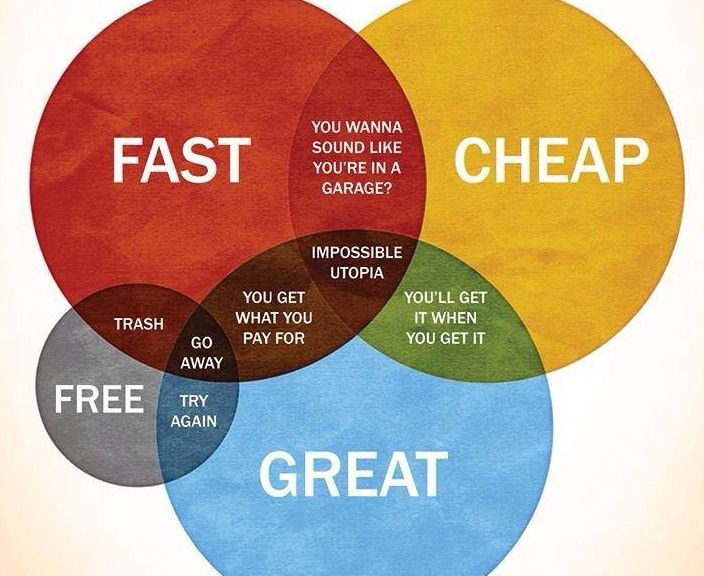“I understand that the level of service you provide is superior, including the QA process and multiple translators to meet tight deadlines. Going with the cheaper quote there will mean more work for me, but the business has decided to proceed with another freelance translator for this job as the quote came back almost a third of the price” – rings a bell?
If you do come back with this kind of reply to the quote sent in response to your RFQ, and what’s worse, you do it time and time again, sooner or later, you’re going to be in big trouble. How come?
Let me explain.

After hearing this response from decision-makers at some of the companies we were in touch with, I asked myself:
“Does this industry need professional translation at all or are they simply not ready for it?”. And you can hear this response worldwide, regardless of industry. Why? There’s a bit of confusion in understanding the role of language service providers and freelance translators and the services both actually provide.
Related content: How Much Do Translation Services Really Cost? [Rates & Factors]
Thanks to the CAT technology and tools language service providers use (it’s actually a standard in professional translation and localization nowadays), they are able to reduce the translation price by a significant amount, and also include all the value-added services like DTP in the price, and the decision - maker’s reply will still be: “ you are three times more expensive for a service at the same level”. The point is… it’s not the same service level.
Of course, we always try to find the best solution to meet the client’s needs. We are able to negotiate the terms of collaboration and even if we hear “your rate sounds a bit speculative to me”, there’s one relevant condition: the service must meet certain quality requirements, with no exceptions. The essential translation quality requirements are laid out in ISO 17100:2015 standard.
There’s no way to bridge the translation pricing gap between the work of a freelancer who:
Does not specialize in certain vertical,
Doesn't have their work checked (they would only send you an unrevised translation, without using the 2- or 3-pairs of eyes principle, let alone quality checking or quality assurance),
Is simply not able to provide the final target language file properly prepared for traditional and electronic publication,
And the language service provider who:
The main question is: “What do I want to accomplish? Do I want it Great, Cheap, Fast (and furious) or Free?”
We are built the way that we like to lie to ourselves, ignoring the little voice in the back of our heads telling us the actual better solution. Convincing ourselves that we can get a valuable service for peanuts.
I know that it’s a decision-makers’ work to keep all the bars and budget in order, but perhaps it’s time to include translation and localization in the yearly budget? This would enable you to get value for a fair and reasonable price. Just 4% of the marketing budget a year assigned to marketing translation is able to increase the number of leads by 25% to 50% with an average ROI of 151% depending on the target language.
Translation pricing is not a rocket science: you get what you pay for, as elsewhere. But you need to remember one thing: poor translation ruins your great brand and comes back to you one day.
Is it worth going for the cheapest competitor?
What are the benefits of this policy?
Do you get more from this approach than from going for the value?
Is your brand prepared to revise your translation pricing practices that work against you and make you lose your share in the market?
These are the questions you will need to ask yourself one day.
Be sure to consult the answers with the right partner.
+1 857 777 5741 ext. 203 (business inquiries)
+1 857 777 5741 ext. 205 (career inquiries)
Trylinskiego 16, 10-683
Olsztyn, Poland
Copyright ATL 2023. All Rights Reserved.